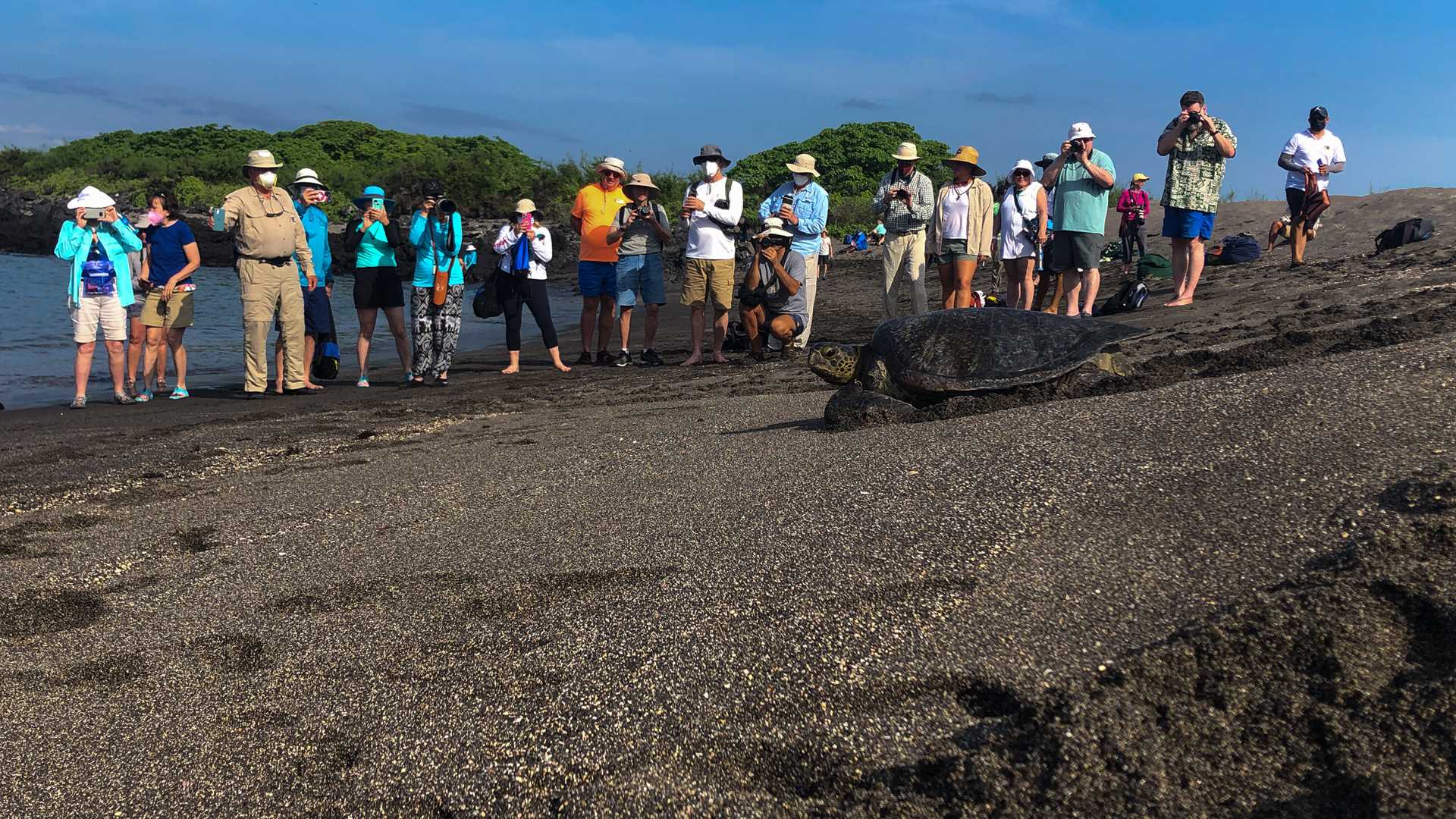We are halfway through our expedition on National Geographic Endeavour II, and it has been an incredible experience so far. Today we anchored in a place call Urbina Bay. We started the day with a wet landing on a black sand beach. The island’s unique coloration is due to inorganic sand consisting of pieces of weathered rock. On our walk, we had the chance to observe tortoises, turtles, land iguanas, and more. The wildlife found on the Galapagos Islands is incredible. After the walk, we enjoyed time on the beach and swimming back to the boat. Later in the day, we changed location to Tagus Cove, a collapsed cinder cone. We had the chance to practice kayaking and then enjoyed an extraordinary snorkel with penguins, flightless cormorants, rays, and various species of reef fish found in the marine reserve. At the end of the day, we hiked to the summits of the scoria cones found on Darwin Volcano.
6/13/2025
Read
National Geographic Endeavour II
Genovesa Island
We started the day with excitement as we landed on the beautiful, pristine coast of Isla Genovesa - a true birder’s dream. Along the sandy beaches and steep cliffs of Darwin Bay, we were surrounded by an incredible array of birdlife. Frigatebirds soared closely overhead with their red pouches on full display, while Nazca and blue-footed boobies nested along the rocky ledges. Swallow-tailed gulls called out as we walked past. In the distance, we saw the stoic and elusive short-eared owl. The island was alive with color, sound, and constant movement. Between our excursions to Isla Genovesa, we snorkeled near Prince Philip’s Steps and discovered a vibrant world beneath the waves. Schools of fish swirled around us, a fur seal turned in the water as if dancing on cue, and sea lions relaxed nearby. As our last snorkeling adventure came to a close, we spotted a sea turtle resting calmly in a crevice. As the sun retreated into the sky on our last return to National Geographic Endeavor II, we reflected on the sheer magnitude of what we witnessed on our last full day. Isla Genovesa, like the other islands, gave us a connection to a sacred world. The harmony between land, sea, and sky reminded us how deeply interconnected, vital, and fragile these ecosystems are. Watching birds tend to their nests and marine life swim effortlessly, we were struck by how little space there is between wonder and reverence. We recognized that our journey wasn’t just about observing unique wildlife, it was about feeling part of something grander and beautifully ancient.







